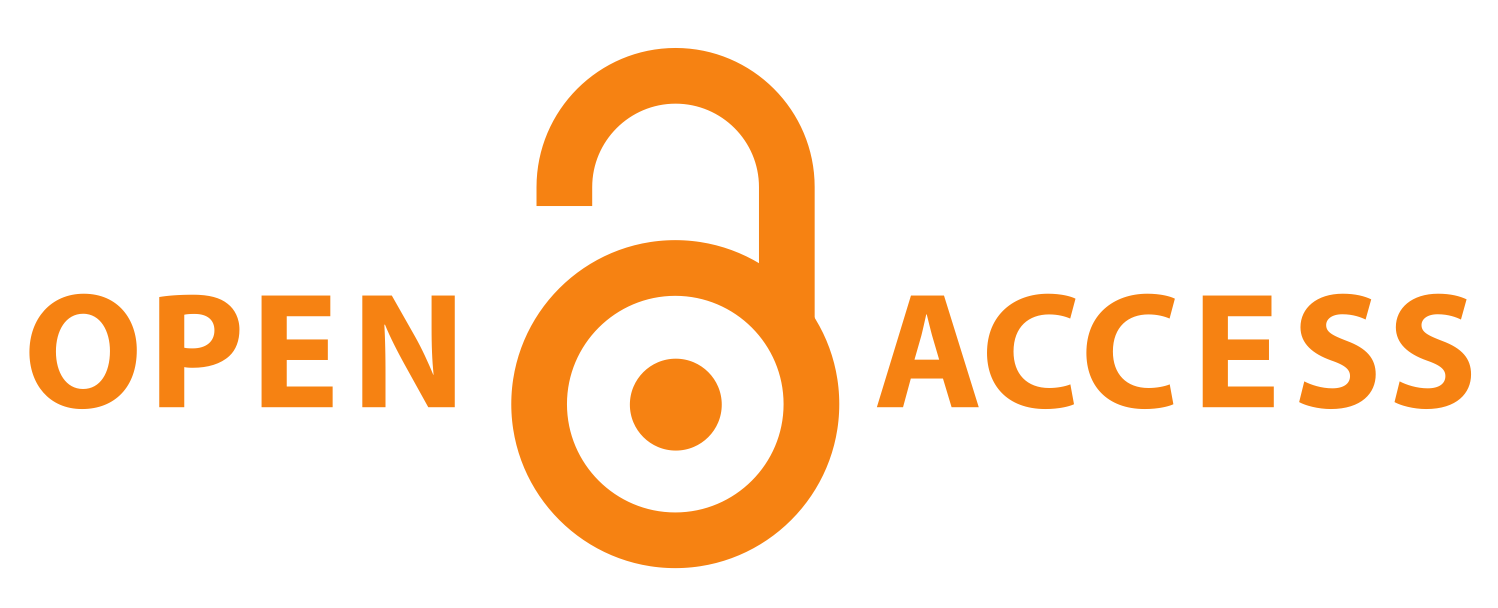Research Article
Issue Editorial Board








Aim & Scope
Erzurum Technical University Journal of Social Sciences Institute (ETUSBED) aims to host scientific publications containing researches related to social sciences, and to bring together national and international literature with theoretical and methodological research that will contribute to social and human sciences. Thus, it is to contribute to the development of social sciences in the face of world problems with new perspectives and approaches.
Erzurum Technical University Journal of Social Sciences Institute (ETUSBED) is academic, scientific and research-based; It is a journal where original and qualified articles, book reviews and reviews are published. The studies submitted for publication in the journal must be "Research Papers", "Translation", "Book Evaluation", "Discussion", "Conversation" and "Conference/Seminar Texts" that concern social and human sciences. The publication language of the journal is Turkish. Studies written in English are also accepted for publication.
Author Guidelines
Dear Foreign Authors:
ETUSBED attaches special importance to foreign publications and can take particular interest in the studies. Please do not hesitate to contact the editors about even the slightest problem you encounter.
2- Author Contribution Form (includes mandatory information on Ethics Committee and financial support)
3- Conflict of Interest Declaration Form in ICMJE format (All authors must sign one document)
3- Ethics Committee Certificate (Use of humans and animals (including materials/data) for experimental or other scientific purposes, Clinical research on humans, Research on animals, Retrospective studies in accordance with the law on the protection of personal data)
4- Article Cover Page with Personal Information
The Copyright Agreement Form signed by all authors should be attached to the manuscripts to be sent to our journal via the Submit Manuscript link.
Researchers who will submit their studies to our journal should prepare their studies in accordance with internationally recognized ethical principles. At this point, although all scientific, ethical, and legal responsibility of the studies submitted to the journal belongs to the researchers, the editorial board may request an ethics committee certificate when necessary. Studies that the editorial board does not find appropriate for research and publication ethics are not subject to evaluation.
- Author name and address: Since the manuscripts are sent to the referees directly through the system (without making any changes in the file uploaded by the author), there should not be any information identifying the author of the article in order to ensure author-referee confidentiality. For this reason, the name(s) of the author(s) should not be included either in the manuscript or in the file name. For information about the author, the Article Cover Page should be filled in.
- Article Text: Manuscripts should not exceed 8,000 words, should be prepared as an MS Word file, and Book Antiqua font, 10.5 point font, should be used as the font, except for the special cases of some fields of study. If there is a special font used in the study, it must be sent with the manuscript. The study should begin with an Introduction, which should focus on the hypothesis, scope, and purpose of the study. The Development section, which can be divided into intermediate and sub-headings, should be supported by data, observations, opinions, comments and discussions. In the Conclusion section, the conclusions reached in the study should be explained by supporting them with suggestions. Except in mandatory cases, the study should be based on the current Spelling Guide of the Turkish Language Association.
- Title: Studies should be titled in Turkish and English. Titles should consist of a maximum of 12 (twelve) words, and only the first letters should be capitalized. All titles in the text should be written in bold with the first letter capitalized.
- Headings within the Article: In the article, main and subheadings should be created based on the number system according to the processing of the subject.
- Abstract: There should be an abstract in Turkish and English, which expresses the subject of the study in the shortest and most concise form, in the range of 150 - 180 words. Under both abstracts, at least 3 (three) and at most 5 (five) keywords and their English versions should be included. Abstract and Abstract sections should be written in 9 pt and single line spacing.
Authors are advised to make use of the Grammarly website to minimize errors in the abstract section. (Our journal has no interest with the web site)
- Headings in the Article: In the article, main and subheadings should be created based on the number system according to the processing of the subject. The following should be considered in the writing and positioning of the headings:
- Tables
Tables should be included in the main document numbered consecutively in the order cited in the text. Each table should have a descriptive heading above it, and any abbreviations used in the table should be defined below the table in the footnotes (even if they are defined in the text). Above the title, a descriptive caption in italics should encompass the entire title. Tables should be prepared using the "Insert Table" command in a Microsoft Office Word file and organized so that the data are easily read and understood. The data presented in the tables should be different from the data presented in the main text but should support and improve the main text.
- Image and Image Captions
Images, graphics and photos should be submitted as separate files in TIFF or JPEG format and attached to the Word document. If an image has sub-units, the sub-units should be combined into a single image and the images should be labeled (a, b, c, etc.). The minimum resolution for each figure should be 300 DPI and figures should be clear and easy to read. Image descriptions should be listed at the end of the main document. Images/pictures should be cited in the main text and numbered consecutively in the order in which they are mentioned.
- Citations and Footnotes
Direct quotations of less than five lines: either in quotation marks: "Quote" or italicized: Quote. Quotations longer than five lines should be written 0.5 cm from the left of the line, in 10 pt. and " ". Footnotes should be written in 9 pt, 3 pt before and after the paragraph, single line spacing and justified.
- Margins should be 2 cm.
Both in-text citations and the references must be prepared according to the Publication Manual of the American Psychological Association (APA), Sixth or Seventh Edition (2020)
The reference styles for different types of publications are presented in the following examples.
Article: Klimonske, R., & Palmer, S. (1993). The ADA and The Hiring Process in Organizations. Consulting Psychology Journal: Practice and Research, 45(2), 10-36.
More Than One Author:
Jerrentrup, A., Mueller, T., Glowalla, U., Herder, M., Henrichs, N., Neubauer, A., & Schaefer, J. R. (2018). Teaching Medicine with The Help Of “Dr. House.” Plos ONE, 13(3), Article E0193972. https://doi.org/10.1371/journal.pone.0193972
Books
Ancient Author's Book
Evliya Çelebi Seyahatname. (sad. T. Temelkuran & N. Aktaş). 1986. Üçdal Publications.
Ksenophon. Anabasis. (trans. T. Gökçöl). 1974. Hürriyet Publications.
Ebû Abdullah Muhammed İbn Battûta Tancî. İbn Battûta Seyahatnamesi I (trans. A. Sait Aykut). 2004.
Yapı Kredi Publications.
By A Single Author:
Kimmel, M. S. (2007). The Gendered Society. Oxford University Press.
By Two or More Authors:
Difonzo, N., & Bordia, P. (2007). Rumor Psychology: Social and Organizational Approaches. American Psychological Association.
By A Corporate (Group) Author:
American Sociological Association. (1975). Approaches to The Study of Social Structure. Free Press.
Edited Book:
Rhodewalt, F. (Ed.). (2008). Personality and Social Behavior. Psychology Press.
Book Chapter
Mccormack, B., Mccance, T., & Maben, J. (2013). Outcome Evaluation in The Development of Person-Centred Practice. In B. Mccormack, K. Manley, & A. Titchen (Eds.), Practice development in nursing and healthcare (pp. 190-211). John Wiley & Sons.
Dissertation or Thesis:
Valentin, E. R. (2019, Summer). Narcissism Predicted by Snapchat Selfie Sharing, Filter Usage, And Editing [Master's thesis, California State University Dominguez Hills]. CSU Scholar Works. https://scholarworks.calstate.edu/concern/theses/3197xm925?locale=en
Çobanoğlu, S. (2021). Halkbilimi Bağlamında Dede Korkut Hikâyelerinin Halk Felsefesi ve Metaetiksel Çözümlemesi. [Ph.D. Thesis, Yıldırım Beyazıt University, Institute of Social Sciences]. Ankara.
Yıkan, Z. U. (2004). Peyami Safa’nın Server Bedi İmzalı Romanları. [Master's thesis, Gazi University Institute of Social Sciences]. Ankara.
No Author: The Universal Declaration of Human Rights. (1974). U.S. Catholic Conference, Division of Latin America.
Web sites: Sparks, Dana. (2018, September 12). Mayo Mindfulness: Practicing Mindfulness Exercises. Mayo Clinic.
Ethical Principles and Publication Policy
Ethical Principles and Publication Policy
The ethical principles and rules in ETUSBED (Erzurum Teknik Üniversitesi Sosyal Bilimler Ensitüsü Dergisi/ Erzurum Technical University Social Sciences Journal) have been prepared according to the guidelines of the
Committee on Publication Ethics' (COPE (https://publicationethics.org)).
Council of Science Editors (CSE)
Committee on Publication Ethics (COPE)
European Association of Science Editors (EASE)
It is formatted in accordance with the National Information Standards Organization (NISO) guidelines.
It is conducted in accordance with the principles of Transparency and Best Practice in Academic Publishing (DOAJ Best practice).
ETÜSBED follows the flowchart proposed by Dergipark and which is in line with the processes of other directories.
In addition to this flowchart, both language and spelling compliance/proofreading are checked.
AUTHOR(S)
* The author(s) should not submit a study that they have published or submitted for publication in any other journal to the ETÜSBED.
* Although the author(s) are expected to submit original works to ETÜSBED, they should cite all sources utilized in their studies in accordance with ethical principles.
* The author(s) should indicate the people who contributed to the study. It should not be recommended that people who do not contribute to the study (especially for the study about to be published) should not be added as authors.
* If the author(s) have any conflict of interest or community of interest regarding the study, this situation must be reported to the editor(s).
* The author(s) should cooperate with the editor(s) (such as informing, withdrawing or correcting the study) about the errors they notice in their published, previewed or evaluated studies.
* The author(s) should upload the ethics committee approval they have obtained for research requiring ethics committee approval to the system during the article application. In addition, the author(s) should provide a citation on the first and last page of the study and in the method section. You can also access the Tr Index Ethical Principles Flowchart by clicking here.
* If the author(s) are requested to provide raw data about their research, they are obliged to send the necessary data and information to the editorial board and scientific board.
REFEREE(S)
All manuscripts submitted to the Journal of ETÜSBED are evaluated by double blind refereeing. This review process aims for an unbiased, objective and independent evaluation process, while the information of the author(s) and referee(s) will remain confidential.
* Referee(s) should only accept studies related to their field of expertise.
* Referee(s) should evaluate the study in accordance with scientific principles, impartiality and confidentiality.
* Referee(s) are required to fill out the Referee Evaluation Form and state their opinions about the study in detail in the Opinions on the Article section under this form.
* Referee(s) should refuse the evaluation by informing the editor when they realize that there is a conflict of interest or conflict of interest.
* Reviewer(s) should make their evaluations in an academic language. Personal comments containing hostility and insults should be avoided. Reviewer(s) who make unscientific comments may be asked to reconsider and correct their comments. Despite this, referee evaluations that do not meet the required standards will not be taken into consideration.
* Referee(s) are required to complete the work under review within the specified time frame and comply with the ethical responsibilities stated above.
EDITOR(S)
General Duties and Responsibilities
* The editor(s) should endeavor to meet the information needs of reviewers, authors and readers about the process.
* The editor(s) should strive to ensure that the publication quality and process of ETÜSBED are carried out and developed following the determined rules.
* The editor(s) should enable processes to improve the quality of studies within the framework of publication policies, respect freedom of thought, and strive to ensure academic integrity.
* The editor(s) should protect the personal data of authors, referees, and readers within the framework of the publication policy of the ETÜSBED.
* The editor(s) must protect the intellectual property rights of all manuscripts submitted to ETÜSBED. In case of violation, they should defend the rights of the study and the author(s).
* The editor(s) should constantly update the referee pool and send the manuscripts to referees according to their areas of expertise.
* The Editor(s) should communicate effectively with everyone involved in the review of all manuscripts submitted to ETÜSBED and take precautions against misconduct.
*The Editorial Board follows the relevant flowchart of COPE to minimize peer review manipulation. If there is a suspicion of peer review manipulation after publication, the Editorial Board will follow COPE's appropriate flowchart.
Relations with Reader(s)
* The editor(s) should pay attention to ensure that the studies published in the Journal of ETÜSBE contribute to the scientific literature and are original.
* The editor(s) are obliged to provide explanatory and informative answers, considering the feedback.
Relations with Author(s)
* The editor(s) should organize the publication policy and writing rules on sample templates in line with the expectations of the authors.
* The editor(s) should provide the necessary information to the authors upon their request in a way that will not affect the refereeing process.
* Unless there are serious problems with the manuscript, the editor(s) should advance the process by considering the referee's suggestions.
Relations with Referee(s)
* The editor(s) should ask the reviewers to evaluate articles appropriate to their knowledge and expertise.
* The editor(s) are responsible for providing helpful resources such as information, guides, and forms that reviewers will need.
* The editor(s) should create a database of reviewers and update this database according to the performance of the reviewers.
* The editor(s) should remove referees from the database who behave in a manner far from academic language and do not comply with the specified deadlines.
* The editor(s) should encourage the reviewers to evaluate the manuscript impartially and scientifically.
UNETHICAL BEHAVIORS
All manuscripts submitted to ETÜSBED are scanned with iThenticate (http://www.ithenticate.com) software program in the pre-control phase. Studies with a similarity rate of less than 25%, which comply with the spelling rules and receive the approval of the language editor, are included in the evaluation process. In addition, if the following unethical behaviors are detected, the study will be rejected.
* The presence of people who have not contributed intellectually among the authors of the study.
* Failure to indicate if the study is produced from any of the studies such as master's / doctorate/project / academic presentation.
* The study is divided into parts and converted into more than one study.
* Failure to declare the conflict of interest or conflict of interest of the study.
* Interfering with the refereeing process of the study.
* Citation Manipulation: Manipulation by the author, another journal, or other publication by citing, self-citing, or incorporating chunks of citations into the study for the purpose of manipulation.
Conflict of Interest Statement
The conflict of interest form should be filled out in cases with multiple authors or in cases that may create a conflict of interest and should be added when the article is uploaded.
ICMJE Form is used as a form. Click to download....
All authors need to sign ONE form. A single file with the signatures of all authors must be uploaded to the system.
Declaration of Financial Support
ETÜSBED requests information about the financial support received by the authors and shares information about the financial support such as the institution and project number on the last page of the article.
Disclaimer
Statements or opinions expressed in the articles published in the journal do not represent the views of the editors, editorial board and/or publisher, but those of the author(s).
Price Policy
ETUSBE Journal does not charge any fee for the submission, evaluation and publication of the articles. Authors do not pay article processing fees or submission fees for the studies they submit to the journal. All expenses of the journal are covered by Erzurum Technical University.
ETÜSBED is an open access journal which means that all content is freely available without charge to the user or their institution. Users are allowed to read, download, copy, distribute, print, search, or link to the full texts of the articles, or use them for any other lawful purpose, without asking prior permission from the publisher or the author. This is in accordance with the BOAI definition of open access.
The journal does not require article processing charges or any other author fees.
ETUSBE Dergisi, Budapeşte Açık Erişim Deklarasyonunu imzalamıştır.
Bk. http://www.budapestopenaccessinitiative.org/list_signatures/


